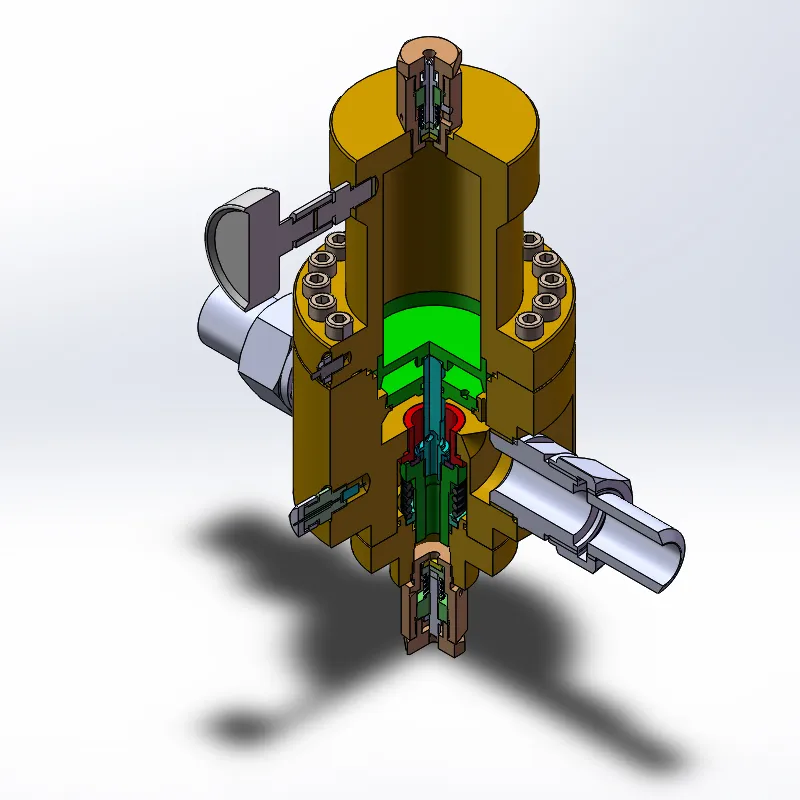
Nov . 25, 2024 08:53
Back to list
Gas Coalescing Solutions for Efficient Separation and Purification Processes
Understanding Gas Coalescers Principles and Applications
Gas coalescers are integral components in various industrial processes, particularly in the oil and gas, petrochemical, and chemical industries. They serve a vital function in separating gas and liquid phases, ensuring that the quality of the gas stream remains high and that equipment operates efficiently and safely. This article explores the principles behind gas coalescers, their design, applications, and benefits.
Principles of Operation
At the heart of a gas coalescer's function is the principle of coalescence. Coalescence occurs when small droplets of liquid combine to form larger droplets. In the context of gas coalescers, this process is crucial for separating liquid contaminants from a gas stream. The coalescer typically consists of a filter element that captures liquid droplets, allowing them to merge and grow larger until they can be removed effectively.
Gas coalescers are designed with layers of filter media that have varying pore sizes. The initial layer captures larger droplets, while subsequent layers target smaller droplets. As the gas passes through these layers, the liquids coalesce and descend to the bottom of the coalescer, where they can be drained. The treated gas exits the coalescer free from liquid contaminants, ensuring improved performance in downstream processes.
Design Considerations
When designing gas coalescers, several factors must be considered to optimize performance. These include flow rate, the type of gas being processed, the expected liquid load, and the particulate matter present. The selection of filter media is critical, as it affects the efficiency of coalescence and the overall longevity of the device.
A well-designed coalescer will minimize pressure drop across the system while maximizing liquid removal efficiency. This balance is essential, as excessive pressure drop can lead to reduced throughput and increased operational costs. Additionally, many systems are equipped with automatic draining mechanisms to ensure that accumulated liquids are expelled regularly, preventing flooding and maintaining optimal performance.
gas coalescer

Applications
Gas coalescers find applications in various settings. In the oil and gas industry, they are often employed in natural gas processing to remove water, hydrocarbons, and other liquid contaminants from gas streams before compression and transportation. This process helps avoid pipeline corrosion, hydrate formation, and other issues that could compromise safety and efficiency.
In the petrochemical industry, gas coalescers are used in processes such as catalytic reforming, where clean gas streams are crucial for optimal catalyst performance. Similarly, other sectors, including food processing and pharmaceuticals, utilize gas coalescers to ensure product purity by eliminating liquid contaminants from gas used in production processes.
Benefits
The benefits of using gas coalescers are manifold. Firstly, by ensuring the removal of liquid contaminants, they enhance the quality of gas, which is essential for compliance with industry standards. Secondly, they contribute to system efficiency, reducing downtime and maintenance costs associated with fouling and corrosion of downstream equipment. Lastly, gas coalescers can improve safety by mitigating risks associated with hydrocarbon release and combustion within refinery and processing environments.
Conclusion
Gas coalescers play a crucial role in modern industrial processes by ensuring the cleanliness of gas streams and enhancing operational efficiency. Their design revolves around the basic principles of liquid coalescence, and their applications span various industries essential for maintaining safety and product quality. As industries continue to innovate and expand, the importance of effective gas treatment systems, including coalescers, will only increase, underscoring their significance in the broader landscape of industrial operations.
Latest news
-
Safety Valve Spring-Loaded Design Overpressure ProtectionNewsJul.25,2025
-
Precision Voltage Regulator AC5 Accuracy Grade PerformanceNewsJul.25,2025
-
Natural Gas Pressure Regulating Skid Industrial Pipeline ApplicationsNewsJul.25,2025
-
Natural Gas Filter Stainless Steel Mesh Element DesignNewsJul.25,2025
-
Gas Pressure Regulator Valve Direct-Acting Spring-Loaded DesignNewsJul.25,2025
-
Decompression Equipment Multi-Stage Heat Exchange System DesignNewsJul.25,2025

